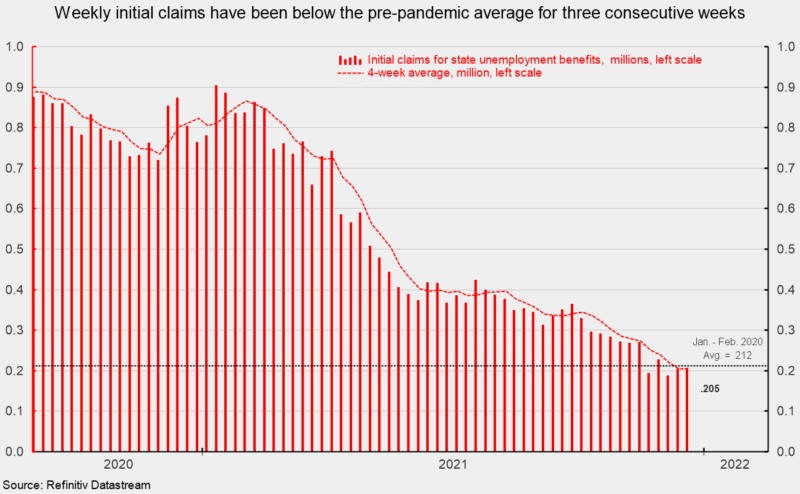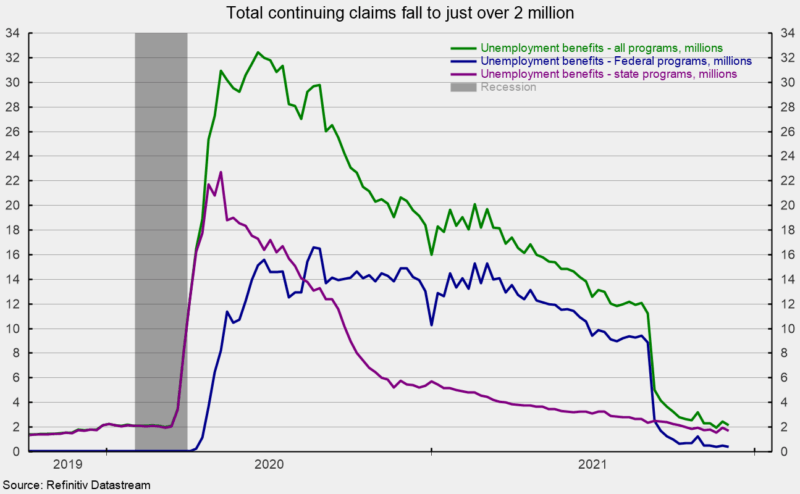Weekly Initial Claims for Unemployment Benefits Hold at a Low Level
Initial claims for regular state unemployment insurance were unchanged in the latest week, coming in at 205,000 (see first chart). The latest result is the third consecutive week below the average of January and February 2020, before the government shutdowns.
The four-week average rose slightly in the latest week – the first increase since October 10 – coming in at 206,250, a rise of 2,750. Despite the increase, the data suggest the labor market remains extremely tight.
The number of ongoing claims for state unemployment programs totaled 1.730 million for the week ending December 4, a drop of 230,448 from the prior week (see second chart). State continuing claims have been below 2 million for eight consecutive weeks.
Continuing claims in all federal programs totaled just 408,036 for the week ending December 4, a decrease of 90,004 (see second chart). As has been the case recently, the change was concentrated in the Pandemic Unemployment Assistance program and the Pandemic Emergency UC program, which accounted for 80,405 of the 90,004.
The latest results for the combined Federal and state programs put the total number of people claiming benefits in all unemployment programs, including all emergency programs, at 2.138 million for the week ended December 4, a drop of 32,452 from the prior week, the third decrease in the last six weeks (see second chart).
Initial claims continue to run at an extremely low level by historical comparison. The low level of claims combined with the high number of open jobs suggest the labor market remains very tight. Continuing labor shortages, along with materials shortages and logistical issues, are likely to continue to hamper production across the economy, sustaining upward pressure on prices. Eventually, supply will rise to meet demand but in the interim, price pressures are likely to remain elevated.







